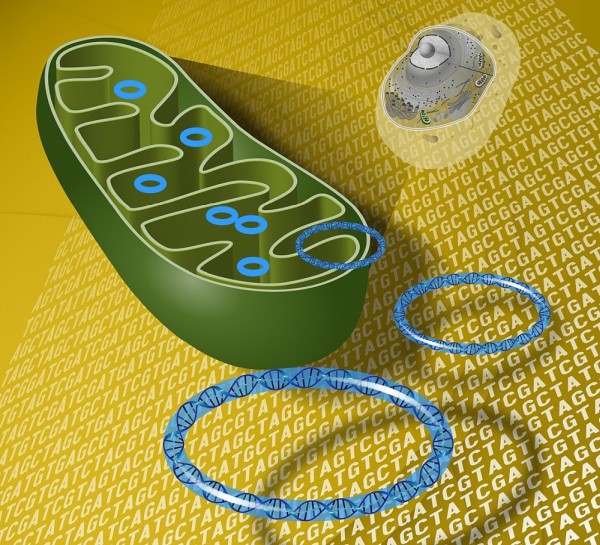For everything our body does, energy is needed. The energy factories of our body, the mitochondria, take care of this. They combine the food we eat with oxygen to produce energy, most importantly in the form of ATP. But anything can go wrong in these ingenious cell-parts, says Jan Smeitink. The result is a group of devastating diseases. The common factor in these mitochondrial disorders is the inability of mitochondria to completely burn food to produce energy. This causes serious conditions. Most infants born with a genetic mitochondrial defect develop a progressive multi-system disease and die at an early age. About eighty of these patients are brought in each year at the Radboud University Medical Centre where Smeitink is a professor of Paediatrics and the director of the IGMD institute for genetic and metabolic disease.
Although there are many compounds claimed to be a therapy for these diseases, the results are disappointing, says Smeitink. His ongoing quest against mitochondrial disorders - he has worked in the field for over 25 years - is therefore aimed at improving therapeutic possibilities. But that is not our only goal, Smeitink says. "The importance of these systems is enormous. It is not only rare diseases which are caused by mitochondrial disorders. Some medicines like those used in HIV treatment and bacterial infections disturb the replication and repair mechanism of mitochondrial DNA. Also, patients with a genetic forms of Parkinson's disease show mitochondrial dysfunction. The application of the results from our work has broad medical implications. It is an extremely interesting field to work in."
Routine screening
To understand and study the energy metabolism in mitochondria, Smeitink and his team are developing live-cell platforms for compound screening. This platform should ultimately be used on a routine basis to screen samples of cells on many parameters and under many different circumstances with a variety of cellular energy modulators. Smeitink explains: "The cell panels exhibit different energy production capacity, ranging from 0-100%. That means they produce different amounts of ATP. We feed these cells a compound and look at the influence on the amount of ATP which it produces." Developing new parameters, called read-outs, is another part of the project. About twenty different read-outs are developed. "We are now able to measure many parameters one at a time, such as oxygen consumption, oxygen radical production, pH, potential or calcium levels. The next step is to measure them simultaneously."
A unique feature of these cell panels, is the use of live mammalian cells which do not change characteristics over many generations. "I am very satisfied with the results that the seven researchers have produced so far. We have come a long way," says Smeitink. "We have well characterised cell lines and proof of principle of successful mitochondrial modulators improving cellular energy status. Through bio-informatics analysis we have found candidate proteins to be used as biomarkers for energy dysfunction. Furthermore, we now understand more the cell biological consequences of the disorders. We can use this knowledge in other projects."
Therapy and prevention
"Our ultimate goal is to understand enough of the energy production so that we can influence it, to develop a therapy for these genetic defects. Gene therapy is an option. It may be possible to try to regain the balance between defect mitochondrial DNA and normal. Transcription regulation is another option, which is the pathway resveratrol takes. Prevention is another way, by prenatal diagnostics. We direct our strategy at metabolic manipulation. By influencing, for example, calcium and oxygen radicals and redox potential we have obtained complete restoration of functions. This means that the first rational treatment strategies become within reach, if this strategy is also working in patients."
"The co-operation with our industrial partners is going well," says Smeitink. Darko Knutti from DSM agrees. "DSM appreciates the expertise and insight the IOP Genomics team has in the field of cellular energy homeostasis and is enthusiastic about possible collaborations with IOP program members."
DSM Nutritional Products provides interesting food substances that may influence the energy production of the mitochondria. These substances are tested in the screening platform. "The aim of the project, to design screening strategies for naturally occurring small molecules that can be used in nutrition to promote health, is perfectly in line with the company ideas in this field," says Knutti. "For DSM, the most important outcomes from the project would be novel, better, and innovative tools and read-outs to identify naturally occurring compounds that have desirable effects on cellular energy homeostasis," he explains. Additionally, he expects new ideas and collaborations to be initiated as a spin-off of this IOP project.
As an economic pay-off of the project, Smeitink will set up a spin-off company, aiming to start this summer. The starter will be housed in Nijmegen and will provide contract research and service for industry and research groups and perform its own research into these screening platforms and therapy.
Bundling forces on energy metabolism
The research council of the UMC Radboud in collaboration with Radboud University research groups has defined the research into energy metabolism as one of the key research aspects, as part of the Molecule to Man initiative. More than twenty research groups work on different aspects of energy metabolism. The council has decided to found a research centre which is called Centre for Systems Biology and Medicine. Smeitink is one of the founders and coordinator of this initiative. This centre will only focus on energy metabolism from mathematical modelling to application as therapy. "This shows that the importance of our research is appreciated and supported." The centre will be launched in spring 2009.
Dit artikel is gepubliceerd als IOP Genomics Factsheet van projectnr. IGE05003, februari 2009.
